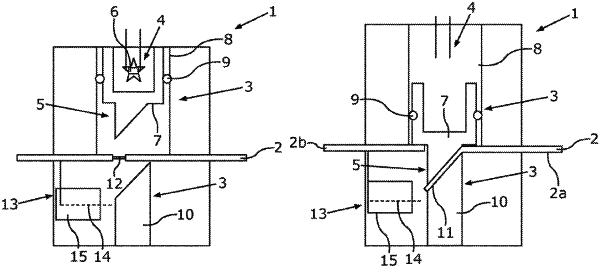| CPC H01H 39/006 (2013.01) [B60L 3/04 (2013.01); B60R 16/033 (2013.01); H01H 85/38 (2013.01); H01H 2039/008 (2013.01)] | 10 Claims |

|
1. A switch-off device for a high-voltage onboard system of a motor vehicle, the switch-off device comprising:
a current conductor for providing a load current path between components of the high-voltage onboard system,
a pyrotechnically activatable separating unit for interrupting the load current path in an event of a fault, the pyrotechnically activatable separating unit having a separating element and a pyrotechnic element, wherein the pyrotechnic element is configured, in the event of the fault, to accelerate the separating element in a direction of the current conductor, and wherein the separating element is configured to separate the current conductor, for interruption of the load current path, and
an arc quenching unit for quenching an arc which is generated upon interruption of the load current path, the arc quenching unit having a melting conductor which, under normal circumstances, is not incorporated in the load current path, and having a quenching device for quenching the melting conductor,
wherein the separating element is configured, upon separation of the current conductor, to bend a current conductor piece for transfer of an arc generated on the melting conductor in a direction of the melting conductor, and thereby to incorporate the melting conductor in the load current path in the event of the fault which generates the arc, and
wherein the bent current conductor piece and the melting conductor are arranged in an at least temporarily contact-free manner relative to each other during the transfer of the arc.
|